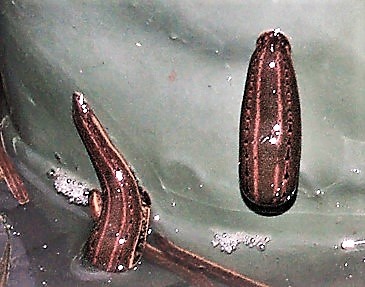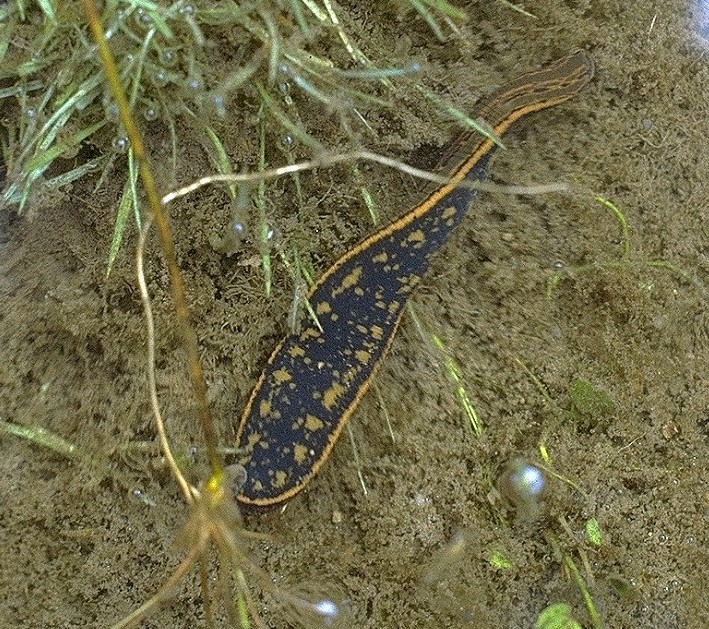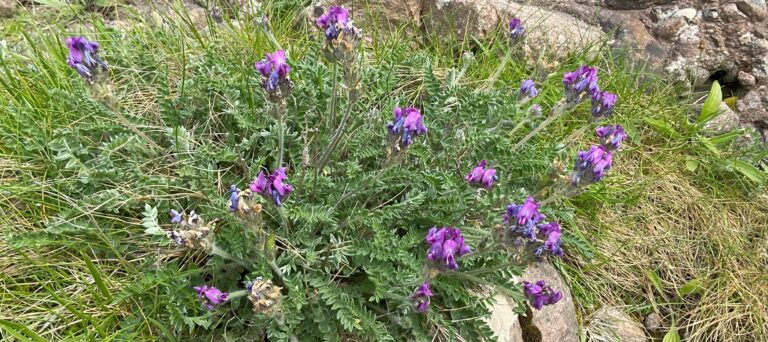Leeches (Hirudinea)
Gaelic: Deala
By Sarah Bird, Project Officer, Species on the Edge, North Scotland Coast, working for Plantlife

Christian Fischer ©

Leeches don’t have many fans, but they are still fascinating creatures. Few people notice them or record their sightings, so we know very little about their status and distribution, especially in north Scotland. Some are now rare and threatened with extinction, and more information is desperately needed. Perhaps you can help?
How to recognise a leech
Leeches are related to earthworms but look very different and have a very distinctive way of moving. They have ribbon-like flattened bodies with a small sucker on the underside of the head and a larger one at the rear end of the body. They move by looping along like some caterpillars, attaching at the front and back with their suckers, they also swim making a wave like motion. Most UK leeches are quite small – less than 5cm long.
What do leeches in the UK eat?
There are two main feeding methods in leeches found in the UK:
- parasites feed on the blood of animals larger than they are
- predators actively hunt and eat animals that are smaller than they are
Most UK leeches feed on amphibians, fish, ducks, worms, snails, and aquatic insects and their larvae.
Where to look?
In the UK we have 17 species of freshwater leech, occurring in ponds, lakes and slow-flowing parts of rivers.
Big Leeches
In Scotland there are two larger leeches which may be found in lochs and ponds, so, if you find a leech over about 10cm long it is likely to be one of these two. We would especially like to know if you find one of these…
The Horse Leech Haemopis sanguisuga can reach 15cm long when extended. They are greenish grey in colour, usually marked with black. They feed as a predator on worms, insects, molluscs, tadpoles and small fish, and sometimes crawl out of the water to capture earthworms. The prey is sucked in and swallowed whole! Horse leeches do not suck blood at all.

Photo © David Turrell via iRecord
The Medicinal Leech (Hirudo medicinalis) is the largest native leech found in the UK, it can reach 20cm long. It is recorded in a limited number of locations in Scotland, the furthest north being near Oban. It has a slightly flattened, cylindrical body with a dark brown or black upper-side. In Scotland the upper-side has darker yellowish-grey stripes. It is usually found in small lochs with a stony shore and abundant vegetation. The Medicinal leech is the only UK leech that is known to feed on human blood, but we are not its normal diet! These leeches typically feed on blood from mammals such as deer, sheep and cattle which enter ponds and lochs to drink. Young Medicinal leeches will feed upon the young of frogs, toads and newts.

Photo © Roger Key
Medicinal Leeches were used extensively in medicine historically and many wild populations were harvested to supply leeches for bloodletting. The species is now rare throughout its range in Europe and extinct in many areas. It is only present in a few small areas of the UK. Taking medicinal leeches from the wild is now illegal in the UK as the species is fully protected by the Wildlife & Countryside Act. They are designated as Near Threatened on the IUCN Red List of Endangered Species.
Fascinating facts:
- Leeches are hermaphrodites, meaning each individual has both male and female reproductive organs.
- Medicinal leeches have five pairs of eyes.
- Once fully fed, an adult leech may not feed again for 12 to 18 months
- Medicinal leeches are still occasionally used to treat blood clots and swelling, and to help blood flow in grafted tissue such as re-attached fingers.
I found a leech – what should i do?
Don’t panic! You are extremely unlikely to be bitten by a leech, and most bites are harmless. Wild swimmers and anglers are most likely to find leeches, but anyone could see them when walking near freshwater. If you find a leech on you, or your wellies or wetsuit please take a photo of it, and then brush it off gently, and send us your record.
Please submit your records, with photos here, or show us any leech photos on North Sutherland Wildlife Group Facebook page.

Photo: Christian Fischer © Creative Commons
More information:
- Medicinal Leech – Bug Directory – Buglife
- Freshwater Leeches – Identification and Ecology – Field Studies Council (field-studies-council.org)
- Leeches | The River Foss Society






